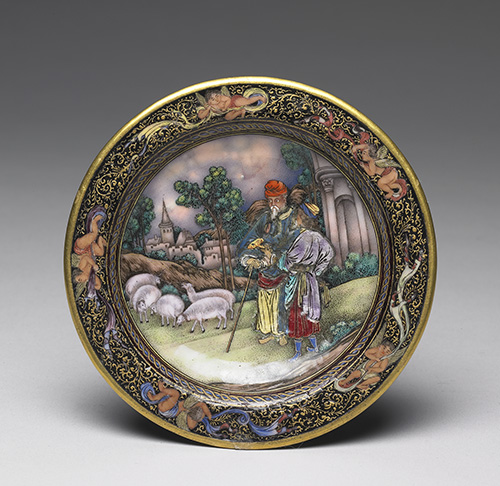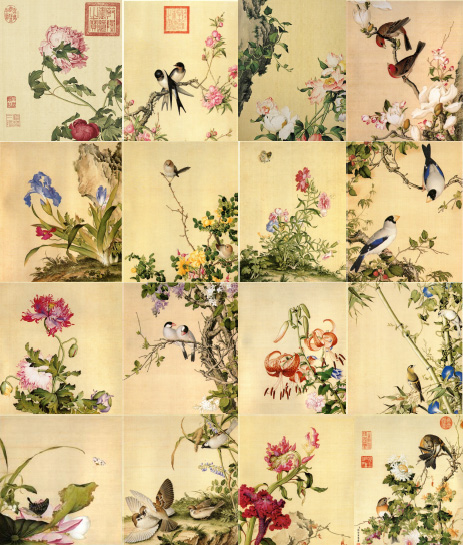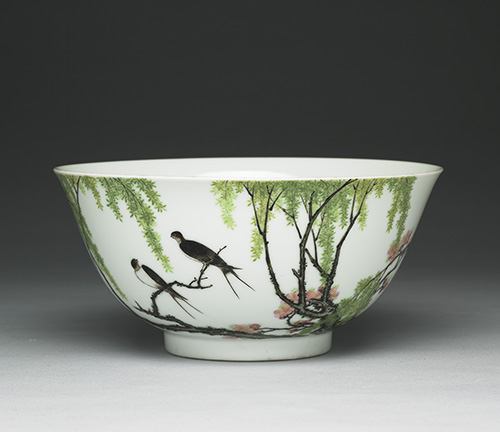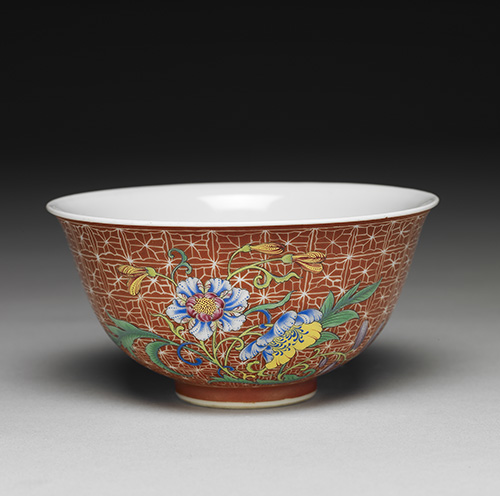The richness of Giuseppe Castiglione's bird-and-flower painting is marked by its difference from traditional Chinese methods. Forms often consist of shapes gradually built up with very few of the outlines normally seen in Chinese painting. "Immortal Blossoms in an Everlasting Spring" in the National Palace Museum collection is a typical example of such. In this album of paintings in ink and colors on silk, eight of them deal with flowers and the other eight bird-and-flower combina-tions. The last leaf is signed, "Reverently painted by Your Servitor, Lang Shining (Giuseppe Castiglione)." The precise forms rendered from life with bright and beautiful colors make this rep-resentative of a new model for academic painting that Castiglione formulated at the Qing court.
Giuseppe Castiglione's solid foundation in Western methods of painting from life can be found throughout this album, such as the delicate gradations for the peony petals and the attention placed on treating areas of color. The petals of white magnolia and cockscomb twist and turn in shades of color, the details fully revealing shadows that demonstrate the artist's focus with a source of light. The birds depicted in these album leaves are also quite varied and animated, their eyes spirited and highlighted with white pigment. White coloring was also used for the rocks and branches to suggest brightness and a sense of volume. The depictions of birds and flowers find comparison with those on imperial painted-enamel porcelains, testifying to the circulation and application of designs in dif-ferent art forms at the Qing court.





